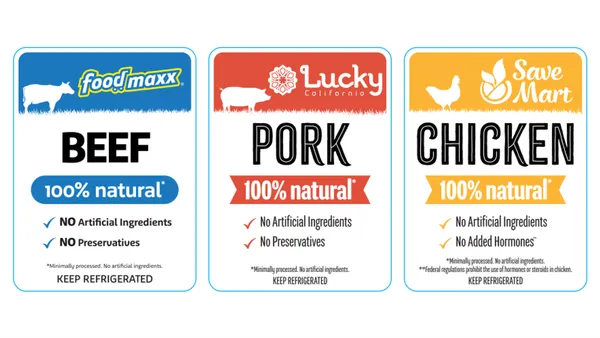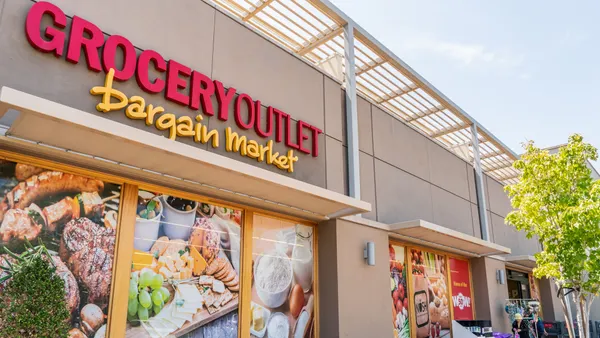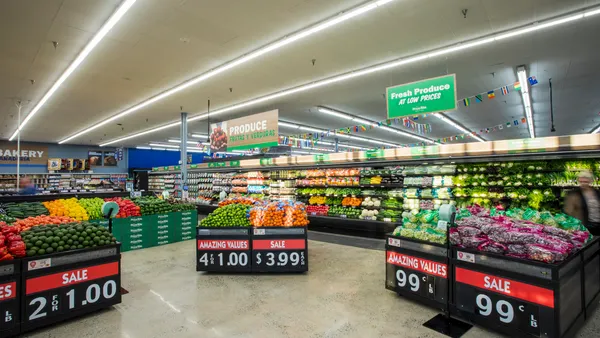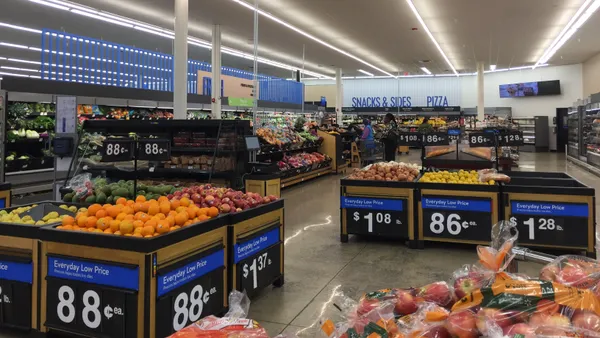Dive Brief:
- Hazardous meat and poultry recalls because of E. coli, salmonella and other pathogens jumped 83% between 2013 and 2017, according to a new report from the U.S. Public Interest Research Group Education Fund. The report also said food recalls in general rose 10% during the same period.
- The consumer group said it found "serious gaps" that need to be filled in the U.S. food safety system. These include laws allowing contaminated meat products to be sold, and permitting polluted irrigation water to be used on produce fields.
- "The food we nourish our bodies with shouldn’t pose a serious health risk," Adam Garber, U.S. PIRG consumer watchdog and report co-author, said in a release. "But systemic failures mean we’re often rolling the dice when we go grocery shopping or eat out. We can prevent serious health risks by using common sense protections from farm to fork."
Dive Insight:
In the report, U.S. PIRG acknowledged the food safety system has significantly improved in the past 100 years — but, "when toxics, fake foodstuffs and bacteria regularly infiltrated the supply, it is clear there is more work to do." And while passage of the Food Safety Modernization Act in 2011 was designed to upgrade the way recalls and outbreaks are handled, the group said the system has failed to keep contaminants out of the food supply, leading to the rise in recalls.
The report noted traceback investigations have been aided by whole-genome sequencing and other technology, so better tools may have resulted in more reported incidents of foodborne illness and contaminated products. However, U.S. PIRG wants to take additional steps.
"[W]hether we’ve always had a food safety problem and now we can see it, or the problem is getting worse in recent years, misses the point," the group stated. "Americans should be confident that our food is safe and uncontaminated from dangerous bacteria like E. coli and Salmonella."
Consumers who are paying attention can't help but notice there are more food recalls in the news these days, but it isn't always because of pathogens. A large number of recent recalls were due to undeclared allergens or extraneous materials making their way into a product.
Still, it's recalls and outbreak investigations like the three in the past year involving E. coli and romaine lettuce and other leafy greens that attract the most publicity — especially when they're in the news for weeks or even longer. This scenario hardly gives consumers a high level of confidence in the safety of foods and beverages they buy, prepare and consume.
It could help allay consumers' fears if companies involved with a recalled commodity make it clear they're doing their best to track down the problem and make things right. For example, major producers and distributors said last fall they were initiating a voluntary labeling regime indicating origin and harvest to help clarify whether lettuce is from a contaminated source. No doubt such a scheme will help retailers and consumers, but it isn't likely to resolve the root problem, which the Food and Drug Administration reported as contaminated irrigation water.
Producers can also hire third-party testing firms to give their products another look before they're released to the retail market if they don't do so already. An extra layer of protection might be another way to demonstrate to consumers the items are as safe as humanly verifiable, and a company is a step ahead of the competition in this area.
Meanwhile, manufacturers might consider reading the U.S. PIRG report to get the group's view of the situation and cover any food safety bases that need more attention. Damages from a recall can average up to $10 million, according to a study from the Food Marketing Institute and the Grocery Manufacturers Association, and nobody needs that kind of a hit to their reputation and sales when it can be avoided.












